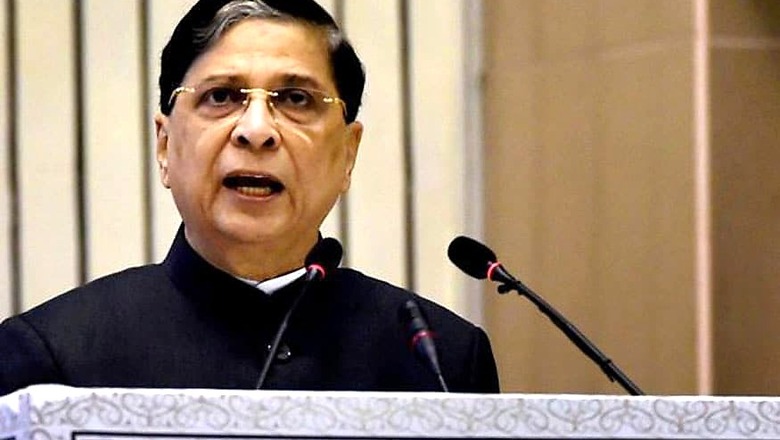
views
New Delhi: Tuesday was a particularly sunnier day in Supreme Court.
Mired in controversy over the allocation of cases and hearing of CBI judge BH Loya's case, Tuesday signified end of a thaw among the five most senior judges of the top court.
Two important events happened on this day. First, Chief Justice of India Dipak Misra met all the four dissenting judges in the morning.
Extending an olive branch, the CJI took the first step towards ending the dispute — and rightly so, being the head of the institution. The CJI requested the four judges to meet him in his chamber. Justices J Chelameswar, Ranjan Gogoi, Madan B Lokur and Kurian Joseph then met the CJI and the ice was broken. Three other judges were also present during the meet.
Sources tell News18 that the five judges were on the same page that all issues require to be ironed out within the institution. It was also decided that they will take the deliberation forward by meeting again on Wednesday.
Justice Misra evidently shows his courage and grace by not reporting to the judges' charges in public while doing what the guardian of an institution is supposed to do -- call the family members and speak to them to regain their confidence.
Confidence here means the most, since it is only through a corrective course and transparent methods that people who questioned the supremacy and integrity of the highest judiciary would be reassured of its propriety, objectivity and authority.
The CJI has taken his time but he has now laid out a path of reconciliation and goodwill, negating doubts about this being reduced to an ego battle among the five most senior judges of the country.
The other event that transpired on Tuesday may very well put to rest all speculations and suspicions around the bench hearing two petitions relating to Judge Loya's death. This matter has become a battleground for politicians as well because Judge Loya was trying the Sohrabuddin Sheikh encounter killing case, in which BJP President Amit Shah was one of the accused before being exonerated.
Questions were raised as to why the CJI had assigned the matter to a particular bench and it was apparently the trigger for the four judges to take the drastic step of calling a press conference.
When the Supreme Court website uploaded the order on Tuesday evening, the judge's order gave ample hints that the case will go to a different bench on the next date of hearing.
This order ended as: "Put up before an appropriate bench." The language indicates that the present bench does not consider itself to be the "appropriate" bench and that one of the judges currently hearing the case intends to recuse.
A recusal by a judge presently hearing the Judge Loya case leaves the CJI with much discretion to assign it to a different bench, avoiding further controversy. Assignment to a new bench will also sit well with the guiding principle of “justice should not only be done but also seems to be done”.
Thus, a new day seems to be in order in the Supreme Court after clouds over its cohesiveness and probity. The CJI should now show the light and redeem the institution's glory by getting all his brother and sister judges along, to end this crisis and convert it into a chance to bring about all necessary institutional reforms.




















Comments
0 comment